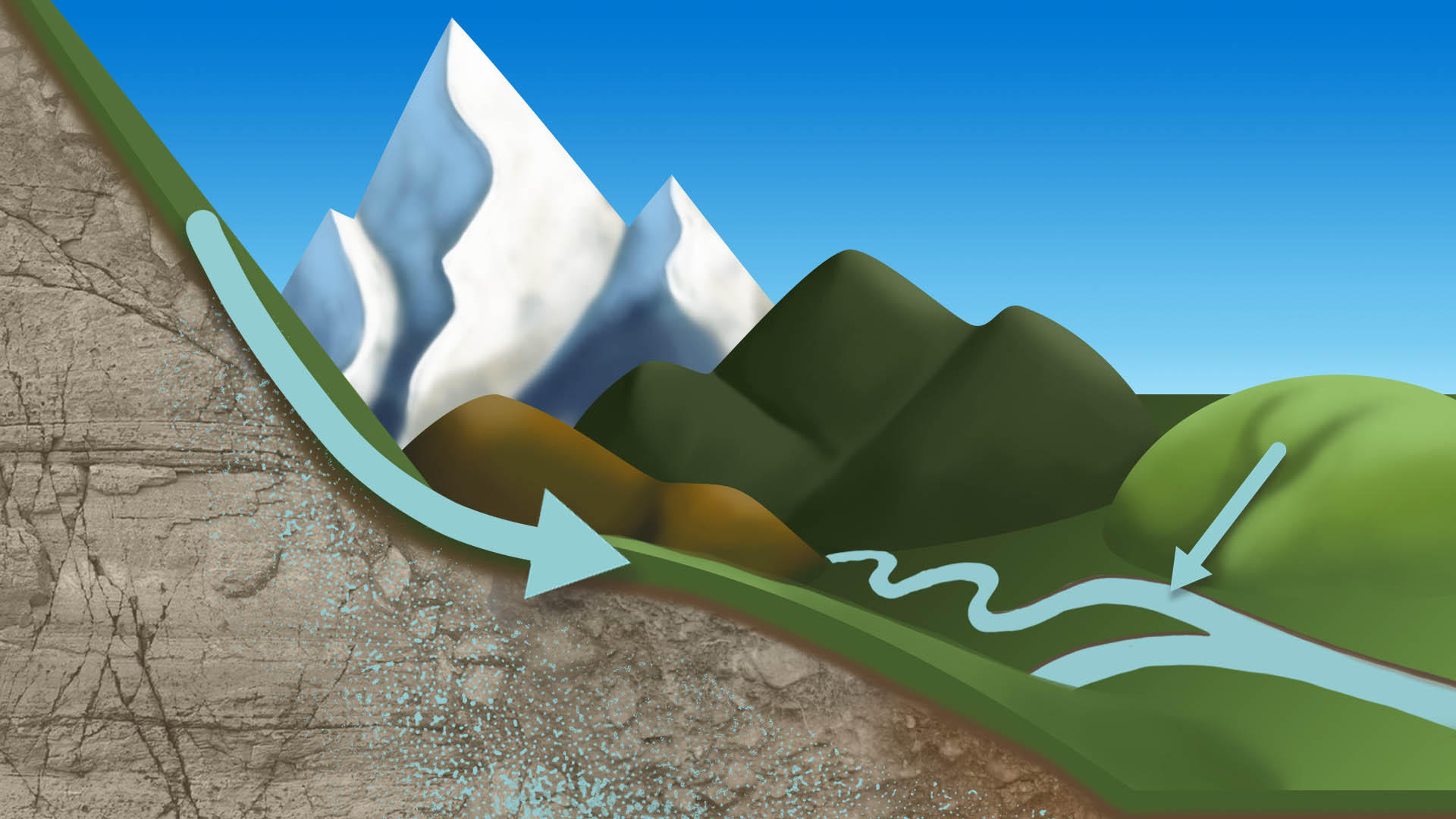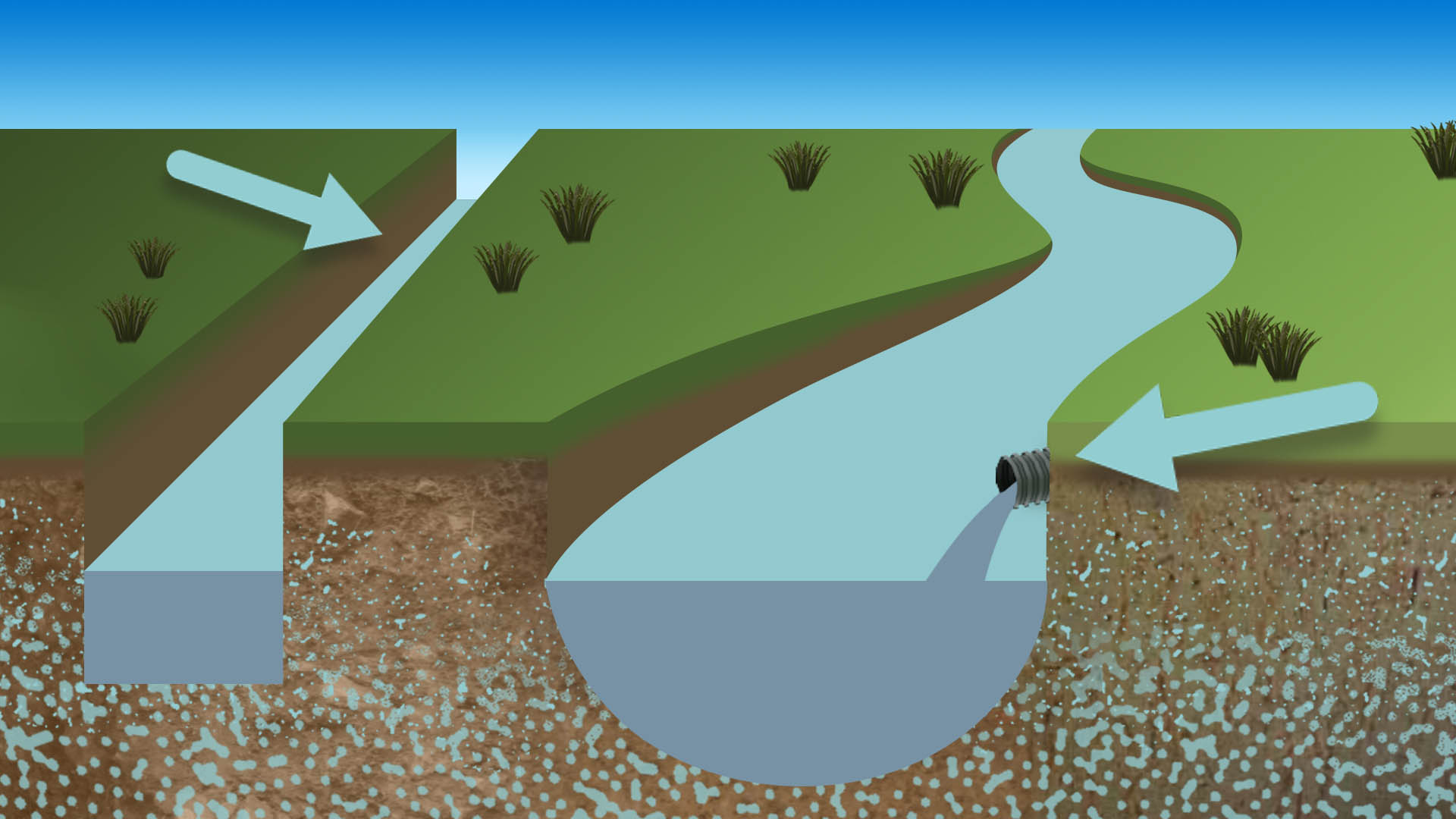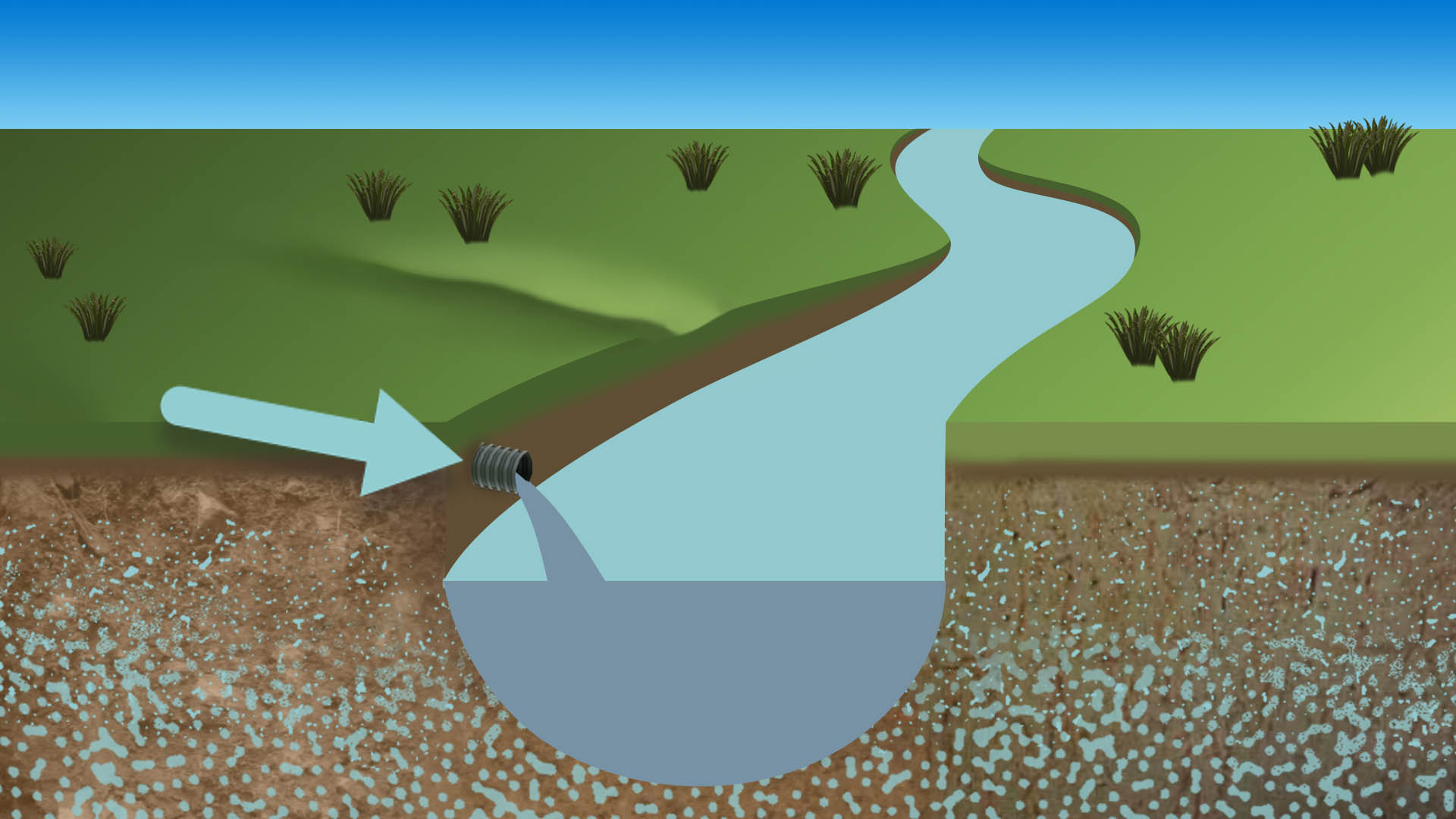Intercept Contaminants along a Flow Pathway
Mitigations associated with the physical filtering, retaining, and slowing the speed of discharges reduce the contaminant load in drainage water as there is increased opportunity for retention within the landscape. As prevention actions by land management and treatment are never 100% effective, combining these with actions that intercept water at known discharge points results in lower contaminant discharges overall.
These actions intercept the water running off over the land surface or at a discharge point. This interception either allows for contaminants to be entrained in the soil or settle out of solution resulting in drainage water with a lower sediment, nutrient, and microbial load.
Suitability of an intervention will also depend on the location in the catchment. Here we focus on inteceptions at paddock and farm scale which prevent contaminants entering a waterway from land uses. Overall improvements results from the collective accumulation of these small interventions catchment wide.

Image Source: Stutter et al. (2019)
Overland Flow

As overland flow converges on the land surface discharge points provide an opportunity to intercept this runoff to maximise contaminant retention on a property and prevent discharge to the waterway.
Recommended Actions
Lateral drainage

Although a diffuse discharge, mitigations that extend into the soil zone are more likely to be effective at reducing nutrient losses from lateral drainage. These areas are also highly likely to have artificial drainage and are susceptible to overland flow events.
Recommended Actions
Artificial subsurface drainage
